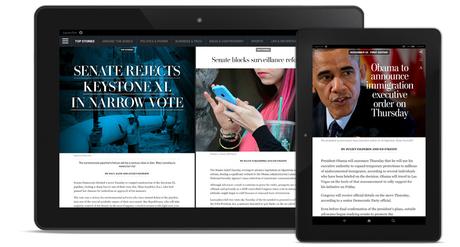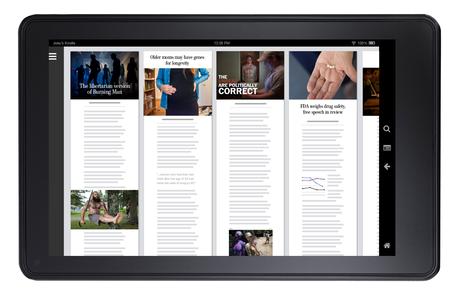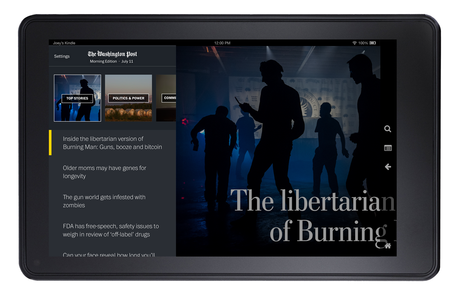











People in seminars and workshops that I conduct are constantly asking me about the role of tablets.
Have tablets become obsolete?, an editor asked me last week at Publish Asia 2015 in Bangkok.
Of course not, came my answer. Tablets are that platform in the midst of the media quartet that shift positions often, but are still very much present in the daily lives of our subscribers.
In 2010, tablets were primarily the platform of preference in the evenings.
Take off your shoes, turn on the TV and lie down on the couch with your brand new iPad on your chest. But tablets got off the couch, just as we all do, and started following us during our commute to work, or became lunch companions. True, tablets have a robust rival in those smart phones, but tablets also have staying power.
The Washington Post’s new owner, Jeff Bezos, Mr. Amazon himself, directed his team to create a Kindle app, thus mixing his two renowned businesses and starting with the great idea that Kindle book readers would also enjoy reading long WaPo pieces on their Kindles.
He was right.
Enter Cory Haik, The Washington Post’s executive producer and senior editor for digital news, who has provided some great insights about this new app in a recent interview with Nieman Reports.
Three highlights of the Cory Haik interview
I was fascinated and intrigued by three items in the Nieman Reports interview with Cory Haik:
1. You need a specific team:
I have said this to my clients repeatedly: you must have a dedicated team to make your digital efforts, especially mobile and tablet editions, work. Give that position a name and a face before you see results.
“ For the first time ever, we hired an editorial team to specifically produce this app. Early on I just knew that for as ambitious as our plan was, it was going to need its own staff. Which can be a scary thing to ask for.”
2. It’s a total lean back experience.
Referring to the Kindle app, she said:
“It (Washington Post content) actually works quite well for our app, because this is a lean-back experience. We’ll take those pieces that are written for the paper over the incremental updates throughout the day. Our users are looking for that kind of media material. They have the time to spend. If you’ve got someone who is spending 30 minutes in your app, they’ve got time to read it. We’re seeing those pieces do really well over the quick-hit blog post.”
“There is good news for long-form content in tablet and in mobile, too. Mobile is about finding the moments. When you have the moment, you’ll spend the time.”
3. People are reading
In fact, I believe that people may be reading more, since they have access to more platforms.
“The time spent thing, it’s pretty dramatic. People are spending a lot of time reading. My biggest takeaway, honestly, is that you really have to spend the time to custom create the tops of these stories. I always say, “Tell and sell the story.” It might not matter on the Web so much, but here it does. When we take the time to write the right kind of headline and pull the right kinds of photos, or do the right news illustration, it makes a difference in people spending their time.”
Success?
When the Post’s Kindle app first appeared, it offered six-month free subscriptions. The six months are up soon and it will be interesting to see how many subscribers decide to start paying for the app.
Of related interest

